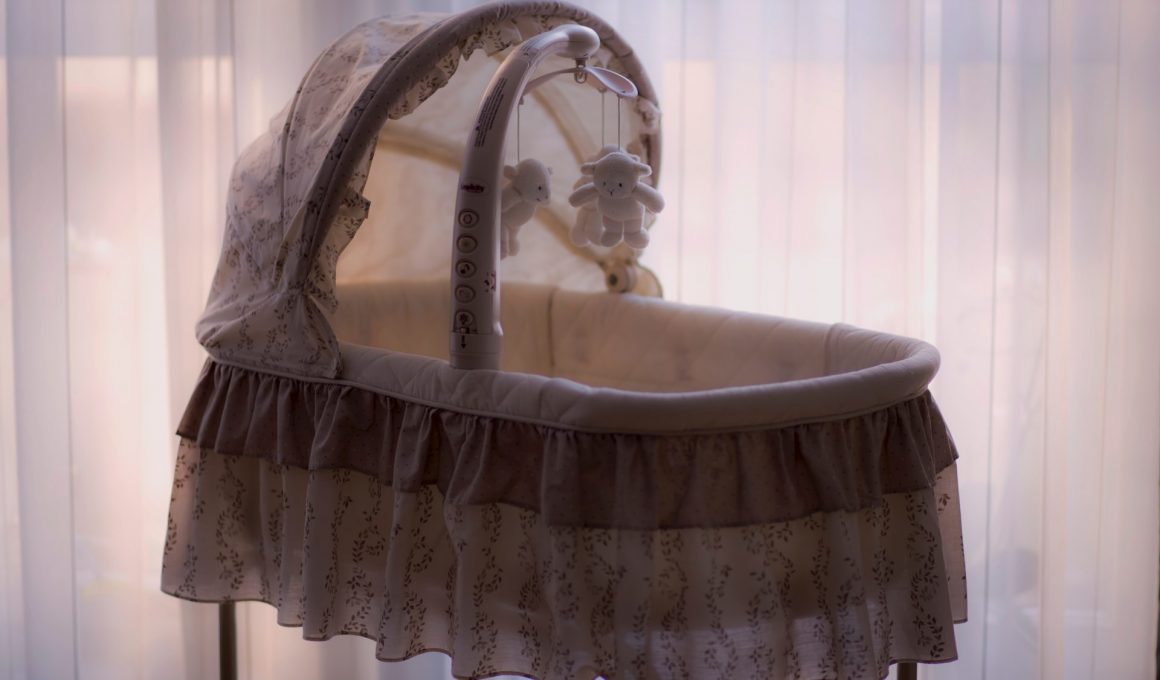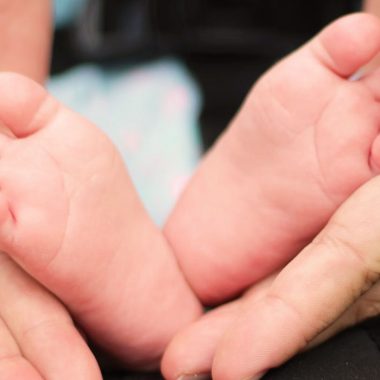Sudden infant death syndrome (SIDS), also known as crib death, is the unexplained, unexpected death of a seemingly healthy infant below the age of one year.
It is perhaps one of the most traumatic experiences parents can encounter.
The exact cause is unknown. But it’s believed to be caused by a combination of factors.
In this article, you will find necessary information from recent research alongside some of the most frequently asked questions and answers about SIDS. We will also highlight expert recommendations for decreasing the risk of SIDS.
SIDS is a difficult and harrowing experience that no parent should ever have to go through.
Table of Contents
What is SIDS?
SIDS, which stands for Sudden Infant Death Syndrome, is the sudden, unexpected and unexplained death of an infant less than one-year-old.
Most SIDS cases are associated with sleep. This is why it is also called “crib death.”
Usually, the baby’s medical history, crime scene investigation, and autopsy don’t explain the cause of death.
This syndrome is abrupt, and the exact cause of death is not fully understood.
With SIDS,
- The baby appears healthy before passing away
- It usually occurs when the baby is asleep, although it can occasionally happen when they are awake
- Most cases occur in the first six months of life
- There is no guaranteed method of preventing it
Since this syndrome is not a disease with apparent indicators, there is no exact cure for it.
But the good news is a lot of research has been conducted on the matter. Parents can take some precautionary measures to reduce the risk of SIDS.
What Causes SIDS?
The exact cause of SIDS is not known.
Despite years of research, SIDS is still a devastating challenge for both parents and the medical world. Centers for Disease Control and Prevention (CDC) reports that 3,400 sudden and unexpected infant deaths (SUID) occur annually in the United States.
In 2020, there were about
- 1,389 deaths due to SIDS
- 1,062 deaths due to unknown causes
- 905 deaths due to accidental suffocation and strangulation in bed
- 41% of SUID cases were reported as SIDS cases
About 1 in 1,000 babies die from SIDS every year.
The unpredictable nature of SIDS scares every new parent. But owing to extensive research, some factors that might put babies at a higher risk for SIDS have been discovered.
And it is revealed that a combination of physical, maternal, and sleep environment factors may put babies at a higher risk of SIDS.
Physical factors
Physical factors that contribute to SIDS are:
- Underdeveloped brain: In many babies, the portion of the brain that controls breathing and arousal from sleep hasn’t matured enough to work properly.
- Premature birth or low birth weight: Premature birth or being part of multiple births increases the risk that a baby’s brain hasn’t developed fully yet. So the baby has less control over breathing and heart rate processes.
- Respiratory infections: Many infants who had recently suffered a cold or some form of respiratory infection experienced SIDS due to breathing problems.
Sleep environment factors
Sleep environment factors include the baby’s sleep position, the place where the baby sleeps, and the baby’s physical condition.
- Sleeping on the stomach: Babies placed on their tummy to sleep might have more difficulty breathing.
- Sleeping on a soft surface: Lying face down on a soft mattress can block an infant’s airway.
- Overheating: Being too warm while sleeping can increase a baby’s risk of SIDS.
- Sharing a bed: SIDS risk may increase if the baby sleeps in the same bed with parents or other siblings.
Maternal health factors
Scientists report that SIDS might be more likely when a baby’s mother:
- Is younger than 20
- Doesn’t receive good prenatal care
- Smokes
- Uses drugs or alcohol during pregnancy or the baby’s first year
Other Risk Factors
SIDS can strike any infant. But researchers have identified some risk factors that might increase the risk. These include:
- Age: It’s most common for babies between 1 and 4 months to experience SIDS. However, it can occur at any time during the first year of life.
- Race: For reasons still under research, non-white infants are more likely to experience SIDS. African-American, Native American and Alaskan native children are at a higher risk.
- Sex: SIDS is more likely to affect boys than girls.
- Family history: Babies who’ve had siblings or cousins die of SIDS are at a higher risk of SIDS.
- Passive smoking: Babies who live with smokers have a higher risk of SIDS.
What is the Triple Risk Model for SIDS?
The triple risk model for SIDS is a model to understand how the risk factors for SIDS interact and may lead to a baby dying suddenly.
The model points to the fact that a vulnerable baby at a critical development period when exposed to an external stressor with which they cannot cope, may die from SIDS.
According to the triple risk model, SIDS occurs when three conditions exist simultaneously:
- The baby has an underlying abnormality that makes them unable to respond to low oxygen or high carbon dioxide blood levels.
- The baby is exposed to a triggering event, such as sleeping face down.
- These events occur during a vulnerable stage in the baby’s development, such as the first 6 months of life.
Who is At Risk For SIDS?
Although the exact cause of SIDS is still not very clear, researchers have identified some higher-risk groups.
Babies might have a higher risk of SIDS if:
- their mother smoked, drank, or used drugs during pregnancy and after birth.
- their mother had poor prenatal care.
- there are previous SIDS cases in their family history.
- they are premies or born with low birth weight.
- their mothers were younger than 20 when they gave birth.
- they are passive smokers.
- they experience overheating during sleep.
- they sleep on their tummies.
- they sleep on a soft surface.
- they sleep in a shared bed.
What Is the SIDS Risk by Age?
The risk of SIDS is highest in the first half of a baby’s first year.
SIDS risk peaks between 1 and 4 months. Then it begins to decrease.
Some known facts about SIDS are:
- SIDS is the leading cause of death in children between 1 month to 1 year of age in the United States.
- The majority of SIDS deaths occur before 6 months of age.
- The majority of SIDS deaths occur between 1-4 months.
- The risk of SIDS appears to be higher in baby boys.
What Can I Do to Help Prevent SIDS?
There is no guaranteed way of preventing SIDS; it is the leading cause of death among infants from 1 month to 1 year.
Despite that, the risk can be reduced.
In 1992, the American Academy of Pediatrics (AAP) issued safe sleep recommendations for preventing SIDS.
In 1994, AAP launched its “Back to Sleep” campaign. That year the SIDS death rate was 103 per 100,000 live births, compared to 35 per 100,000 live births in 2018. It’s clear that the SIDS rate has dropped dramatically since then.
In 2022, AAP updated recommendations for reducing infant deaths in sleep environment.
Now let’s take a look at AAP’s updated recommendations to reduce the risk of sleep-related infant deaths:
- The baby should sleep on a firm, flat noninclined surface.
- Sitting devices, such as car seats, strollers, swings, infant carriers, and infant slings, are not recommended for routine sleep, in the hospital or at home, particularly for infants younger than 4 months.
- Breastfeeding reduces the risk of sleep-related infant deaths. Any level of breastfeeding is better than none. Research has shown that two months of breastfeeding (even when complemented with formula feeding) significantly lowers the risk of sleep-related deaths. The AAP recommends exclusive breastfeeding for up to 6 months, with continuation until one year or longer as mutually desired by parent and infant.
- AAP recommends that parents sleep in the same room but not in the same bed as a baby, preferably for at least the first six months.
- Avoid parent and infant exposure to nicotine, alcohol, marijuana, opioids, and illicit drugs.
- Make sure the baby receives routine immunizations.
- Pacifier use is associated with reduced risk.
- Avoid the use of commercial devices that claim to reduce the risk of SIDS or other sleep-related deaths. There is no evidence that any of these devices reduce the risk of SIDS. Importantly, using products claiming to increase sleep safety may give caregivers a false sense of security and complacency. Do not use home cardiorespiratory monitors as a strategy to reduce the risk of SIDS.
- Supervised awake tummy time is recommended to facilitate infant development and minimize the development of positional plagiocephaly (the development of a flat spot on the head). Parents are encouraged to regularly provide the infant with tummy time while awake and supervise them for short periods beginning shortly after hospital discharge. These periods should be increased incrementally to at least 15 to 30 minutes per day by 7 weeks of age.
- There is no evidence to recommend swaddling as a strategy to reduce the risk of SIDS. If infants are swaddled, always place them on their backs. Weighted swaddles, weighted clothing, or weighted objects on or near the baby are not safe and not recommended. When an infant exhibits signs of attempting to roll (which usually occurs at 3 to 4 months but may occur earlier), swaddling is no longer appropriate, as it could increase the risk of suffocation if the swaddled infant rolls to the prone position.
Summary of ways to prevent or reduce SIDS
- Put a sleeping baby on their back.
- Choose a firm bed for the baby. Avoid using soft toys or bedding.
- Keep your baby away from anyone who smokes.
- Keep your sleeping baby close to you, but don’t sleep with your baby in your bed.
- Never bring your baby to bed with you when you are tired or under medication.
- If you are tired, don’t breastfeed while sitting on a chair or couch in case you fall asleep.
- Opt for breastfeeding for as long as you can.
- Don’t forget that skin-to-skin contact is important for your baby.
- Immunize your baby.
- Consider using a pacifier to put your baby to sleep.
- Protect your baby from overheating.
Why Is Stomach Sleeping Dangerous?
Researchers revealed that SIDS is more likely to occur with babies placed on their tummies to sleep than with babies sleeping on their backs.
You should pay attention not to place your baby on their sides when putting them to sleep. This is because your baby can easily roll from the side position onto their tummy during sleep.
The single most effective way of lowering a baby’s risk of SIDS is to place the baby to sleep on their back.
Studies suggest that stomach sleeping may increase SIDS risk through a variety of mechanisms, including:
- Increasing the probability that the baby breathes in their exhaled breath, leading to carbon dioxide buildup and low oxygen levels
- Causing upper airway obstruction
- Interfering with body heat dissipation, leading to overheating
These factors might put an infant at higher risk of SIDS. A simple way to avoid this risk is to place your baby on their back when putting them to sleep.
- The AAP’s “Back to Sleep” campaign recommends that all healthy infants younger than one year of age be placed on their backs to sleep.
- Older infants may not continue sleeping on their backs all night long. However, that is not a cause for concern.
- Once babies start rolling over from front to back and back to front during their sleep, it’s alright for them to sleep in a position they are most comfortable in.
When is SIDS No Longer A Risk?
SIDS can occur anytime during a baby’s first year of life.
Although not all the aspects of SIDS are well known up to now, experts do know that the risk of SIDS appears to peak between 1 and 4 months of age and decreases after six months.
References: aap.org, kidshealth.org, childrenshospital.org, nhs.uk, rarediseases.org, healthychildren.org, sciencedirect.com, parents.com, my.clevelandclinic.org, hms.harvard.edu, health.harvard.edu, mayoclinic.org, medicalnewstoday.com










